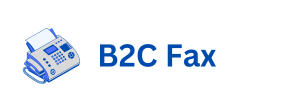There is an unhealthy tendency among some businesses to view e-commerce marketing as an expense rather than an investment.
If you are a startup or small to medium enterprise (SME) and are consideringBrand Growth—It’s crucial to view marketing activities as an investment.
Speaking of marketing budget, you must first provide enough budget for your marketing campaigns in order to strive for a high return on investment (ROI).
Balancing marketing budget with ROI is a huge hurdle for most marketers across all industries, including e-commerce. With data-driven planning and implementation across different marketing channels, you can achieve high ROI.
Another thing worth mentioning is that you need to plan and test your marketing efforts and strategies accordingly on a small scale before expanding your budget.
Too often, companies prematurely adjust whatsapp marketing service marketing budgets and channels based on insufficient data and metrics before deciding whether a channel is worth investing in.
1. Develop a marketing strategy and utilize built-in marketing tools that fit your company’s goals
Before you plan your eCommerce marketing budget, you need to first understand your market niche to plan the best ways to reach your target demographic.
If you have a new, foreign (but exciting!) product to sell online, you need to understand how your potential customers will react and who those potential customers are.
Create a consumer profile of your potential target that includes:
- Their age group (Baby Boomers, Gen Z, or Millennials?)
- The platforms they frequently use (are they Facebook lovers or TikTokers?)
- interest
- geography
- Income level
There are better, more efficient ways to find customers, and your sales message will be based on their consumer profile.
Depending on the market you’re in, you may need to invest more money into creating marketing materials that differentiate your business from your competitors and position your brand in the minds of key demographics.
In terms of budget allocation, most companies have marketing budgets that account for 1% to 10% of revenue. However, for many D2C startups seeking high growth, marketing budgets often account for 20% to 40% of their revenue.
Any eCommerce company should work with an online store hosting partner that offers marketing tools built in. These tools will simply make your marketing efforts easy and efficient, and they will also save you money in the long run.
Once you compare the top choices for eCommerce engines – whetherShopify or Squarespace — Make sure the built-in marketing tools it offers help improve page rankings in SEO, provide you with comprehensive website data, and include a dashboard that allows you to easily manage your social media accounts in one place.
2. Enhance your brand campaign with marketing materials
If you want your brand to thrive, you must leave a lasting, positive impression on your customers.Royal emblemand related professional marketing materials best email marketing tools and services and promotion on appropriate marketing channels, including social media.
You can distribute printed marketing materials at events and conferences. During product launches, you can offer freebies, promo codes, and in-person interviews.
These may sound a bit overwhelming, but this type of campaign is one of many other effective marketing strategies that can turn potential customers into loyal, lifelong customers.
Another effective marketing strategy to turn prospects into lifelong customers is to keep them satisfied, which is a great way to reward them through a loyalty program.
3. Optimize Your E-Commerce Site for Search (SEO)
The modern consumer shops differently than most marketers are accustomed to. Many customers search for products or services on Google, or look for them on Facebook, Instagram, or Pinterest.
They also read reviews and comments about the products and services they are looking for, which largely influences their purchasing decisions and behavior.
That’s why SEO, social media marketing, and a comprehensive digital presence become extremely important.
Therefore, consider allocating part of your marketing budget to optimizing your website presence.
Of course, most companies spend a sizeable budget on acquiring new customers, but optimizing your website, content, and improving the user experience will help you make the most of your existing marketing strategies.
4. Effectively use Facebook ads for lookalike audiences
You can use Facebook ads to market to a targeted or general audience. Facebook ads are comparable to pay-per-click (PPC) ads like Google Ads, but with Facebook you can directly reach consumers who may be interested in your products. Facebook Dynamic Ads Automatically show the right products to users who have expressed interest on your website, app, or elsewhere on the internet.
In 2019, the average cost per click for PPC on Facebook was nearly $0.55, which is $2 less than in 2018. This is good for companies that want to get more leads.
Facebook advertising campaigns help increase brand awareness, drive traffic, and improve conversions. Facebook makes it easy to set a fixed budget for your marketing campaigns and adjust the parameters to target the right people you want.
UGC is also a great way to keep your marketing dating data costs low by attracting your best customers to create visual content for you. By getting content directly from your fans, you can use this authentic content on your social media channels.
Summarize
The actual cost of eCommerce marketing depends on many variables, but it all comes down to your total revenue. The higher your revenue, the more money you can allocate to marketing activities to drive your growth and success.
Author Bio
Jaron Su is the co-founder and COO of Traktion, a platform that makes hiring growth simpler, more flexible, and more profitable for businesses. Prior to Traktion, Jaron founded Artisan & Fox, an e-commerce marketplace with operations in over 10 countries.

